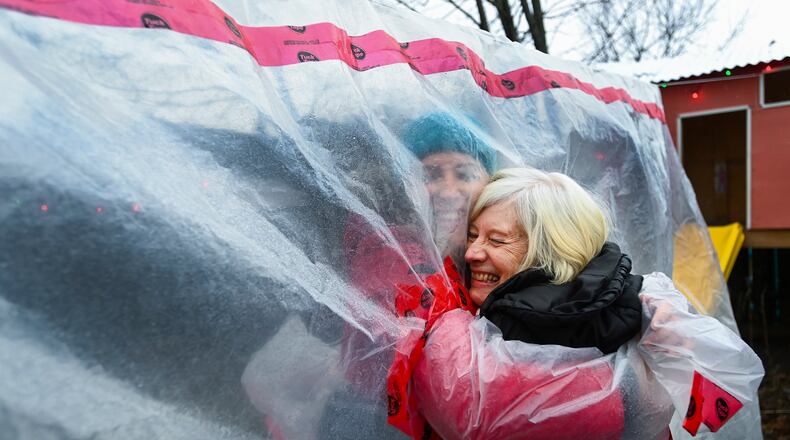This week, we asked readers what they’re most looking forward to when we’re on the other side of the COVID pandemic, and most of the answers said “hugs.” Hugs have been scarce since the COVID pandemic hit in March of 2020. We’ve been in masks (most of us) and stayed at arms-length (most of us) to keep the virus at bay.
My in-laws, for example, are in their late 80s. It’s been more than a year since my wife and her sisters have given them a long, big hug. I have friends who give me “air hugs” and blow kisses. It’s nice but it’s like patent leather vs. real leather — it isn’t the same.
Why? Because hugs make people healthier and happier. Go to a party, see a friend, get a hug. Go to a family gathering, hugs all around. See a buddy, and it’s time for a bro hug.
But hugging isn’t the only form of human interaction. Handshakes have been replaced by elbow bumps. Pats on the back or touches on the shoulder have gone the way of the Edsel. Kisses on the check have disappeared like phone booths.
Dr. Jeremy Schumm, a psychology professor at Wright State University, answered a few questions for me via email about hugs and closeness.
What’s the importance of human contact?
Humans are social creatures, and most of us need human contact to maintain good mental health and well-being.
Why are hugs so important?
Hugs are a way of communicating closeness and emotional connection toward others. Hugs are also a way of expressing emotional connection and similar emotions across a range of relationships. For example, we can hug our children, spouse, or a close friend to emotionally connect with or comfort the other person. When emotions are high, it is sometimes hard to express our emotions or to know what to say to validate the other person’s feelings. Hugs allow humans to express emotional validation and connection toward the other person without having to label what we are feeling or to think about the “right” words to say.
Aren’t hugs normally accompanied by other emotions that show joy? Smiles? Tears? Laughter? What do they all convey? People tend to experience an increased sense of closeness in their relationships when they communicate most emotions, whether positive or negative. For example, recognizing and validating another person’s feelings of joy or sadness can lead you to feeling closer to that person. Hugging is one way to emotionally connect around many different feelings, including joy and sadness.
What have people lost from not being able to hug as freely as they’re used to? When we cannot hug others, we are stripped of one way to emotionally connect and comfort each other.
That’s why so many of our readers noted the strong desire for a hug. They miss that feeling of closeness and everything a hug conveys. Before COVID I was in a wine group that, it seems, spent a third of the time hugging during our weekly meetings. Maybe that’s an exaggeration, but if it is, it’s not that far off. These are people who enjoy each other’s company and shared love of wine. One way you express that — a hug.
My guess is, the hugs we soon received will be bigger and longer for the time being.
I can’t wait.
Ray Marcano is the interim Ideas and Voices editor for the Dayton Daily News. Email him at raymarcanoddn@gmail.com
About the Author


